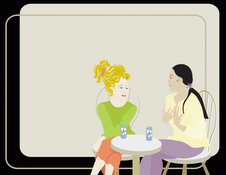
Roma, The Eternal City
Unfortunately all good things must come to and end, and Rome was where the curtain would fall on our Grand Italian Tour. Initially, I was a bit unenthused, as I'd been to Rome at age 18 and in the summer, where it is wicked crowded, and my memories were limited to being chased around by Italian lotharios on scooters (fortunately, they were more interested in my fair-haired companions). However, I was pleasantly surprised. Rome is a thriving, pulsating modern city with the trappings of ancient relics plopped in the midst of its core. While a large metropolis, Rome is surprisingly easy to navigate, as most of the landmarks are within walking distance of each other. Our hotel was also in a great location -- near the Trevi Fountain and within a 10-minute walk of the Spanish Steps. True, the latter is a congregation for clusters of crowds, Italian teenagers, and con artists; nevertheless it's still a great sight and quintessential Roma.

As night began to fall, we headed to the Villa Borghese, Rome's version of Central Park. Merry go-rounds, crazy kids on go-carts, joggers, a lake, and pizza vendors were all out in full force that Sunday evening. It's great to see quality family time spent outdoors walking instead of by the tv. I've said it once, and I'll say it again, the Italians really know how to live.
We spent our first full day exploring the ancient sites: The Colosseum (we bought our tickets ahead of time at the Palatine Hill, avoiding an enormous line -- thanks Rick Steves), The Forum, Mammertine Prison, and Palatine Hill. The latter is believed to be the site of Rome's first established settlement, and had cool ancient ruins and a great museum of artifacts. The hill is lush, cool, breezy, and relatively uncrowded. We saw a lot of sculptures like this:

The Colosseum was amazing. While the events it was constructed for were unquestionably barbaric, you have to tip your hat in tribute to the astounding feats of civil engineering and architecture. Considering too, that this is the blueprint for modern stadium design, it's pretty remarkable.
Other notable sights included the Pantheon, Cappucin Crypt (either designs comprised of monk bones), and the view of Rome from one of it's seven hills in Trastevere. We had lunch with Jeremy's friend Cesare, a Neopolitan who took us out for the best pizza in town and directed us to the best Sicilian gelato ever.
Sadly it all came to an end. Arrivederci Italia, I shall return. It was the trip of a lifetime, and I'm grateful for having the forum in which to relive our memories.
Ciao!







